Hongbo Bi
Collaborative Camouflaged Object Detection: A Large-Scale Dataset and Benchmark
Oct 06, 2023
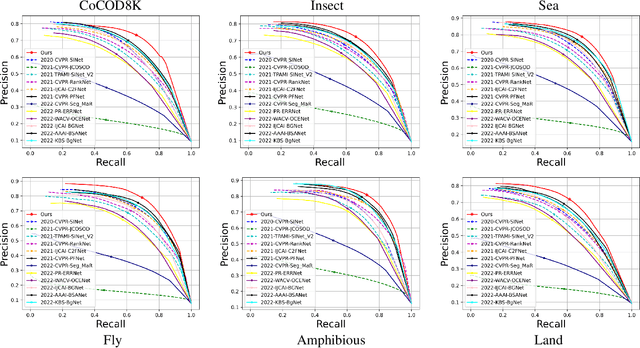
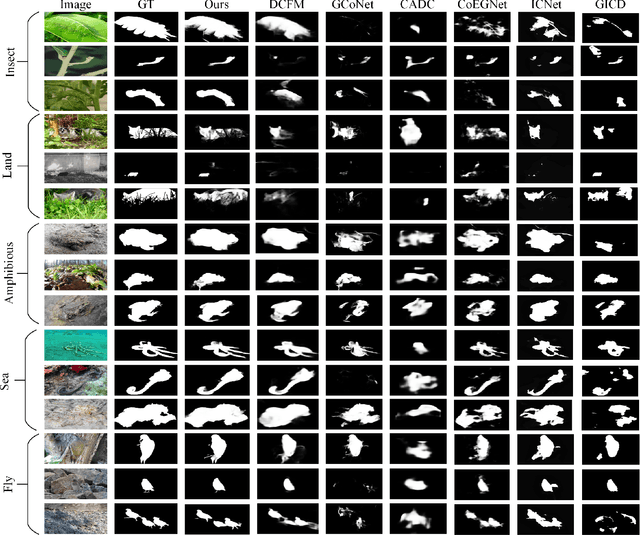
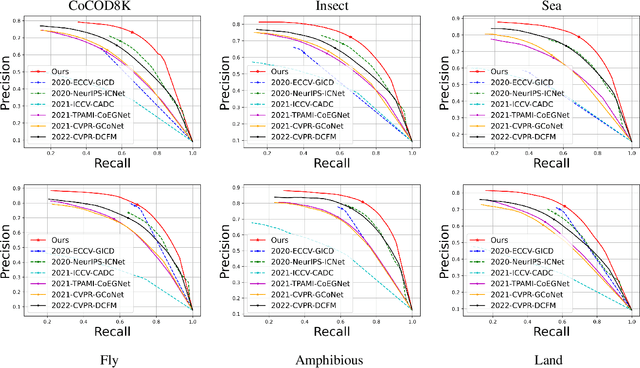
Abstract:In this paper, we provide a comprehensive study on a new task called collaborative camouflaged object detection (CoCOD), which aims to simultaneously detect camouflaged objects with the same properties from a group of relevant images. To this end, we meticulously construct the first large-scale dataset, termed CoCOD8K, which consists of 8,528 high-quality and elaborately selected images with object mask annotations, covering 5 superclasses and 70 subclasses. The dataset spans a wide range of natural and artificial camouflage scenes with diverse object appearances and backgrounds, making it a very challenging dataset for CoCOD. Besides, we propose the first baseline model for CoCOD, named bilateral-branch network (BBNet), which explores and aggregates co-camouflaged cues within a single image and between images within a group, respectively, for accurate camouflaged object detection in given images. This is implemented by an inter-image collaborative feature exploration (CFE) module, an intra-image object feature search (OFS) module, and a local-global refinement (LGR) module. We benchmark 18 state-of-the-art models, including 12 COD algorithms and 6 CoSOD algorithms, on the proposed CoCOD8K dataset under 5 widely used evaluation metrics. Extensive experiments demonstrate the effectiveness of the proposed method and the significantly superior performance compared to other competitors. We hope that our proposed dataset and model will boost growth in the COD community. The dataset, model, and results will be available at: https://github.com/zc199823/BBNet--CoCOD.
Towards Accurate Camouflaged Object Detection with Mixture Convolution and Interactive Fusion
Jan 14, 2021
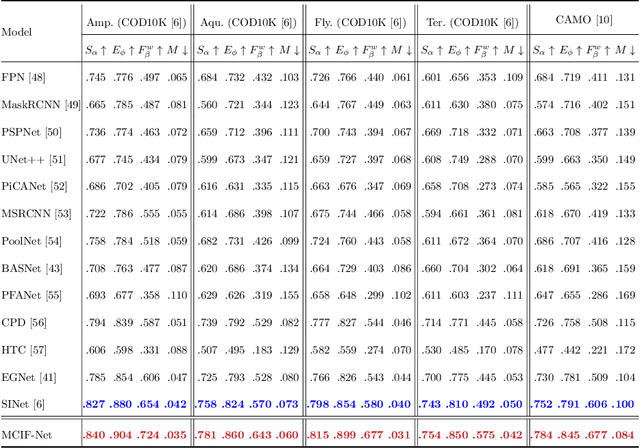
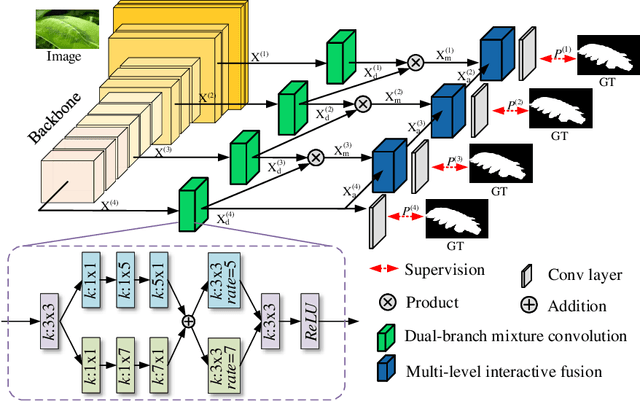
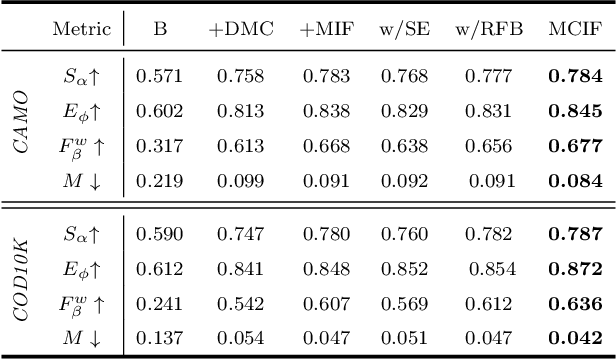
Abstract:Camouflaged object detection (COD), which aims to identify the objects that conceal themselves into the surroundings, has recently drawn increasing research efforts in the field of computer vision. In practice, the success of deep learning based COD is mainly determined by two key factors, including (i) A significantly large receptive field, which provides rich context information, and (ii) An effective fusion strategy, which aggregates the rich multi-level features for accurate COD. Motivated by these observations, in this paper, we propose a novel deep learning based COD approach, which integrates the large receptive field and effective feature fusion into a unified framework. Specifically, we first extract multi-level features from a backbone network. The resulting features are then fed to the proposed dual-branch mixture convolution modules, each of which utilizes multiple asymmetric convolutional layers and two dilated convolutional layers to extract rich context features from a large receptive field. Finally, we fuse the features using specially-designed multi-level interactive fusion modules, each of which employs an attention mechanism along with feature interaction for effective feature fusion. Our method detects camouflaged objects with an effective fusion strategy, which aggregates the rich context information from a large receptive field. All of these designs meet the requirements of COD well, allowing the accurate detection of camouflaged objects. Extensive experiments on widely-used benchmark datasets demonstrate that our method is capable of accurately detecting camouflaged objects and outperforms the state-of-the-art methods.
 Add to Chrome
Add to Chrome Add to Firefox
Add to Firefox Add to Edge
Add to Edge